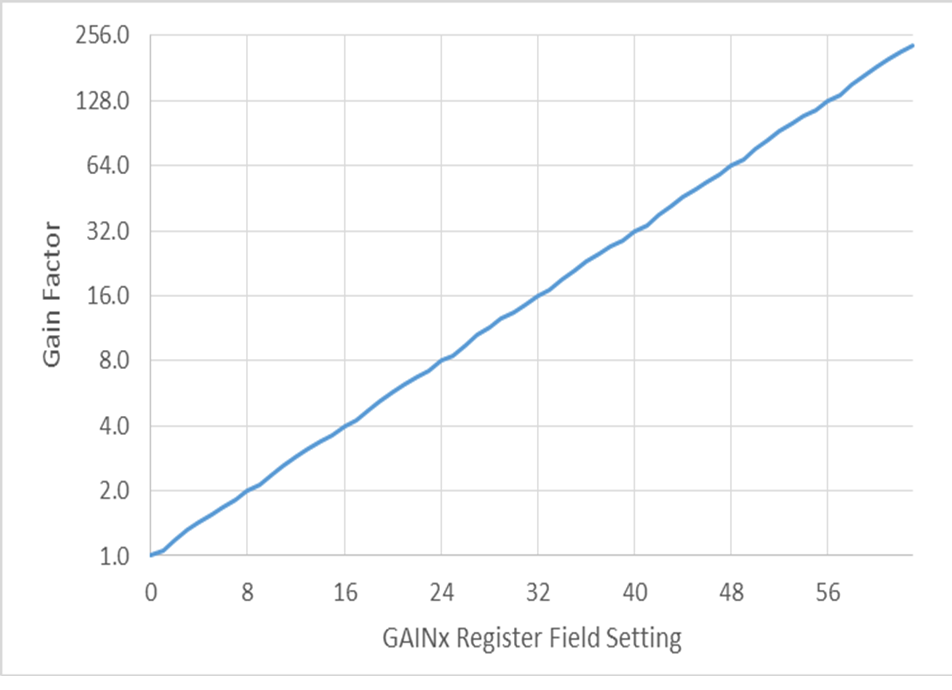SNOA993A June 2018 – July 2021 LDC2112 , LDC2114 , LDC3114 , LDC3114-Q1
6 Gain, Hysteresis, and Threshold
Each channel has a dedicated gain setting (GAINx). The Gain setting can be adjusted from an effective 1x to 232x, in 64 steps. Throughout this document, the value programmed into the register is referred to as GAINx, and the effective gain value that is applied by the algorithm is referred to as the Gain Factorx. The steps are logarithmically spaced, with each increment in the GAINx field increasing the Gain Factor by ~9%. Using a lower Gain Factorx reduces the sensitivity to environmental shifts. The gain is applied to net code, which is the raw measured value with the baseline tracking subtracted.
 Figure 6-1 LDC211x and LDC3114 Gain Factor vs. Programmed Register Field Setting
Figure 6-1 LDC211x and LDC3114 Gain Factor vs. Programmed Register Field SettingThe effective Net Code shift to a fast stimuli is:
NET_CODEx = 0.013 × Gain_Factorx × ΔƒSENSOR
Where ΔƒSENSOR is in PPM